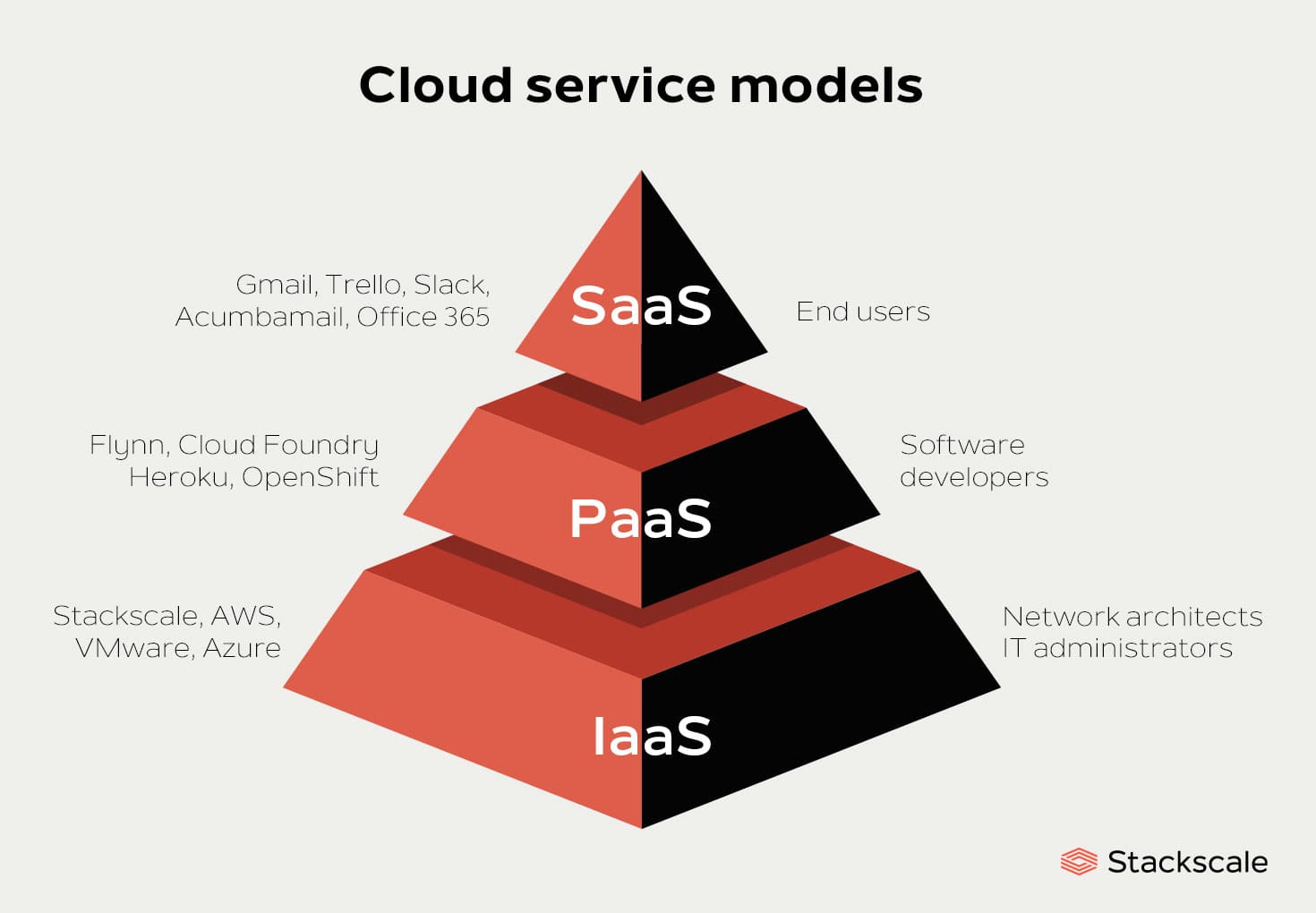Because cloud computing offers previously unheard-of levels of flexibility, scalability, and cost effectiveness, it has completely changed the way enterprises run. It might be difficult to select the best cloud solution for your company, though, because there are so many options accessible. With the aid of this advice, you may choose the cloud solution that best suits the particular requirements of your company.
Comprehending Cloud Computing Models
Understanding the three main cloud service models is crucial before delving into particular solutions:
IaaS, or infrastructure as a service
Through the internet, IaaS offers virtualized computer resources. IaaS is a pay-as-you-go method of renting IT infrastructure from a cloud provider, including servers, virtual machines, storage, networks, and operating systems.
Among the essential features of IaaS are:
- Maximum command over your IT assets
- Adaptability in setting up and controlling the computer environment
- In charge of overseeing operating systems, runtime, middleware, data, and applications
- Examples include Google Compute Engine Platform as a Service (PaaS), Microsoft Azure virtual machines, and Amazon EC2.
Platform as a Service (PaaS)
PaaS is a platform that lets users create, execute, and maintain apps without having to deal with the hassle of constructing and maintaining the infrastructure needed for app development and launch.
PaaS's salient features include:
- Put more emphasis on developing applications than managing infrastructure.
- Business analytics, database administration, and integrated development tools
- Accountability for solely managing data and applications
- Examples include Google App Engine, Microsoft Azure App Services, and AWS Elastic Beanstalk.
SaaS, or software as a service
Software as a Service (SaaS) is a subscription-based online software application delivery system. SaaS allows cloud providers to host and maintain the underlying infrastructure and software application.
Among the salient features of SaaS are:
- No software or hardware to update, maintain, or install
- Accessible from any device with an internet connection
- Low management needs
- Salesforce Cloud Service Models, Google Workspace, and Microsoft 365 are a few examples.

Models of Cloud Deployment
You must take into account various deployment models in addition to service models:
The Public Cloud
Third-party cloud service providers, who supply their computer resources, such as servers and storage, via the internet, own and run public clouds.
Advantages of public cloud computing:
- Reduced expenses (no hardware capital expenditures)
- No upkeep obligations
- Almost infinite scalability
- Exceptional dependability with backup resources
Things to think about:
- Reduced authority over the infrastructure that supports it
- Possible issues with compliance and security for private information
- Potential differences in performance
Private Cloud
Computing resources utilized just by one company or group make up a private cloud. It may be housed by a third-party service provider or physically situated in the on-site datacenter of your company.
Private cloud advantages include:
- More authority over security and resources
- Adaptation to certain business requirements
- Improved adherence to legal mandates
- Resources that are dedicated and not shared with other groups
Things to think about:
- More expensive than public cloud
- In charge of overseeing the cloud infrastructure
- Restricted scalability due to internal capacity
Hybrid Cloud
Public and private clouds are combined in a hybrid cloud, which is connected by technology that permits data and apps to be exchanged between them.
Hybrid cloud advantages:
- The ability to operate tasks in the most suitable setting
- Cost reduction via utilizing private clouds for sensitive or important tasks and public clouds for workloads that fluctuate
- Increased security and compliance options and the capacity to scale up using public cloud resources during periods of high demand
Things to think about:
- Managing several environments might be complicated.
- Applications and infrastructure must be compatible.
- Possible difficulties with integration
Multiple Clouds
Using services from several public cloud providers, including AWS, Microsoft Azure, and Google Cloud Platform, is known as a multi-cloud strategy.
Advantages of many clouds:
- Preventing vendor lock-in
- Capacity to use top-notch services from various suppliers
- Options for improved resilience and catastrophe recovery
- Potential cost reduction through the selection of the most economical services
Things to think about:
- Increasing complexity in management
- The requirement for multi-platform expertise
- Possible expenses for data transport between clouds
"The question is no longer if you should move to the cloud, but which cloud strategy is right for your business."
Important Things to Take Into Account While Selecting a Cloud Solution
1. Needs for Business
Start by outlining your company's goals and needs precisely:
- What issues do you hope cloud computing can help you with?
- Which workloads and apps are you planning to migrate to the cloud?
- What degree of scalability, availability, and performance are you looking for?
- What financial restrictions do you have?
- What is your implementation schedule?
2. Compliance and Security
When choosing a cloud system, security considerations are crucial:
- Which security standards and certifications does the provider follow?
- How are data at rest and in transit encrypted?
- Which authentication methods and access controls are available?
- How are security incidents handled by the provider?
- Does the solution satisfy the legal standards of your industry, such as GDPR, HIPAA, and PCI DSS?
3. Effectiveness and Dependability
Analyze the dependability and performance aspects:
- Which service level agreements (SLAs) are available from the provider?
- What is the availability and uptime history of the provider?
- What is the provider's approach to disaster recovery and outages?
- Do you have data centers close to your main places of business?
- What is the expected network performance?
4. Flexibility and Scalability
Think about how easily the solution can change to meet your evolving needs:
- Is it simple to scale up or down resources in response to demand?
- Does it support auto-scaling?
- How simple is it to add new features or services?
- What are the restrictions on user accounts, storage, or processing power?
5. The Cost Framework
Recognize the entire cost of ownership:
- What is the pricing structure (subscription, pay-as-you-go, etc.)?
- Are there any unstated fees associated with support, API calls, or data transfer?
- Which technologies are available for tracking and optimizing costs?
- Are there any reductions for large consumption or long-term commitments?
- How much do various suppliers charge for your particular workloads?
6. Capabilities for Integration
Evaluate the cloud solution's compatibility with your current systems:
- Does the solution work with common protocols and APIs?
- Does it have the ability to integrate with your current on-premises systems?
- Do popular business software have pre-built connectors?
- Which services and tools are accessible for migration?
7. Assistance and Support
Assess the degree of assistance offered:
- Which forms of support—chat, phone, or email—are available?
- What are the response times and support hours?
- Does premium support come with a price tag?
- Which documentation and training materials are available?
- Is there a knowledge base or community forum?

Evaluating Leading Cloud Providers
Although there are many cloud providers, Google Cloud Platform (GCP), Microsoft Azure, and Amazon Web Services (AWS) are the three main competitors. Here's a quick analogy:
Web Services by Amazon (AWS)
With the widest array of services and worldwide infrastructure, AWS leads the market.
Advantages:
- More than 200 services in a broad service portfolio
- The most established platform with the longest history in the market
- Largest infrastructural footprint in the world
- Robust network of third-party integrations and partners
Ideal for: Businesses of all sizes seeking a full-featured cloud platform with a wide range of features and a worldwide presence.
Azure by Microsoft
Azure is especially beneficial for businesses who have previously made investments in Microsoft products.
Advantages:
- Smooth interaction with Microsoft products, such as Dynamics 365 and Office 365
- Robust Azure Stack hybrid cloud capabilities
- Strong enterprise-level security and adherence to regulations
- Full-service AI and machine learning solutions
Ideal for: Businesses needing hybrid cloud solutions, companies with particular compliance needs, and organizations with current Microsoft investments.
GCP, or Google Cloud Platform
GCP makes use of Google's advantages in global network infrastructure, machine learning, and data analytics.
Advantages:
- Excellent machine learning and data analytics skills
- Global network with high performance
- Robust support for Kubernetes and containerization
- Competitive rates with discounts for continued use
Ideal for: Startups and digital-native businesses, as well as organizations specializing in data analytics, machine learning, and containerized applications.
How to Choose the Best Cloud Solution
1. Evaluate the IT Environment You Are in Now
Start by taking stock of your current data, infrastructure, and applications. Determine each component's dependencies, performance needs, and security issues.
2. Establish Your Cloud Strategy
Establish your entire cloud strategy based on your IT evaluation and business goals. Choose the deployment methods (public, private, hybrid, multi-cloud) and service models (IaaS, PaaS, SaaS) that best suit your requirements.
3. Set Migration Workload Priorities
Not every application is a good fit for moving to the cloud. Sort your workloads according to criteria like:
- The importance of business
- Requirements for security and compliance
- Performance requirements
- Complexity of integration
- Benefits anticipated from moving to the cloud
4. Perform a Proof of Concept
Use a non-critical workload to test the cloud solution you have chosen before committing to a full migration. This reduces risk while enabling you to verify integration, security, and performance capabilities.
5. Create a Plan for Migration
Make a thorough migration plan that consists of:
- Timeline and significant events
- Resources needed
- Techniques for reducing risk
- Procedures for testing and validation
- Plans to roll back
6. Put into Practice and Enhance
Carry out your relocation strategy while keeping a careful eye on expenses and performance. Continue to optimize your cloud environment after the transfer to make sure you're getting the most out of your investment.
"Cloud is about how you do computing, not where you do computing." - Paul Maritz
In conclusion
The agility, effectiveness, and competitive edge of your company can all be greatly impacted by your choice of cloud solution. You may find the option that best fits your business goals by being aware of the many cloud models, thoroughly assessing your needs, and adhering to a methodical selection procedure.
Keep in mind that adopting cloud computing is a continuous process rather than a one-time occurrence. Regularly review your cloud plan to make sure it still meets your needs as your company develops and cloud technologies improve.
Our specialty at Business Solutions is assisting businesses in navigating the challenges associated with cloud adoption. Our team of professionals can help you choose the best cloud option, evaluate business needs, and put a successful migration plan into action.